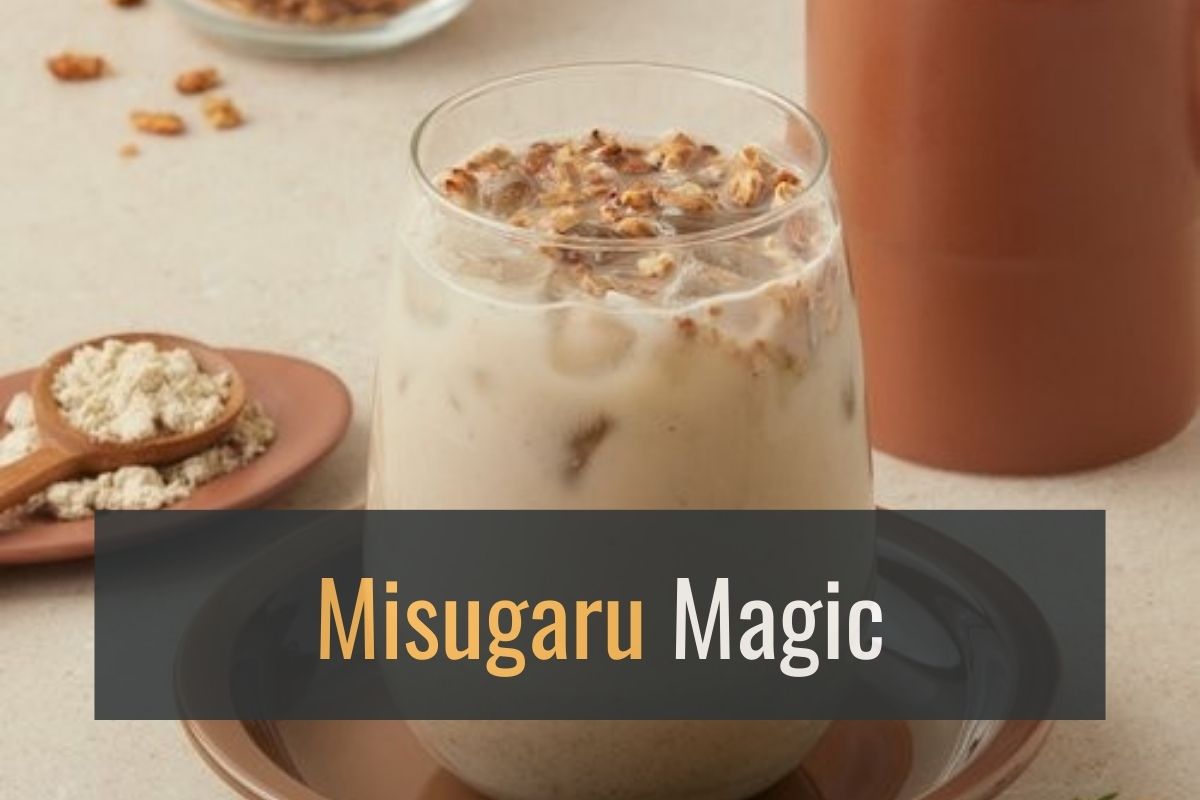Misugaru is an enchanting blend of roasted grains that’s more than just a drink. It’s a celebration of texture, taste, and tradition.
Get ready to experience the nuttiness, and tradition that Misugaru brings to every cup and dish.
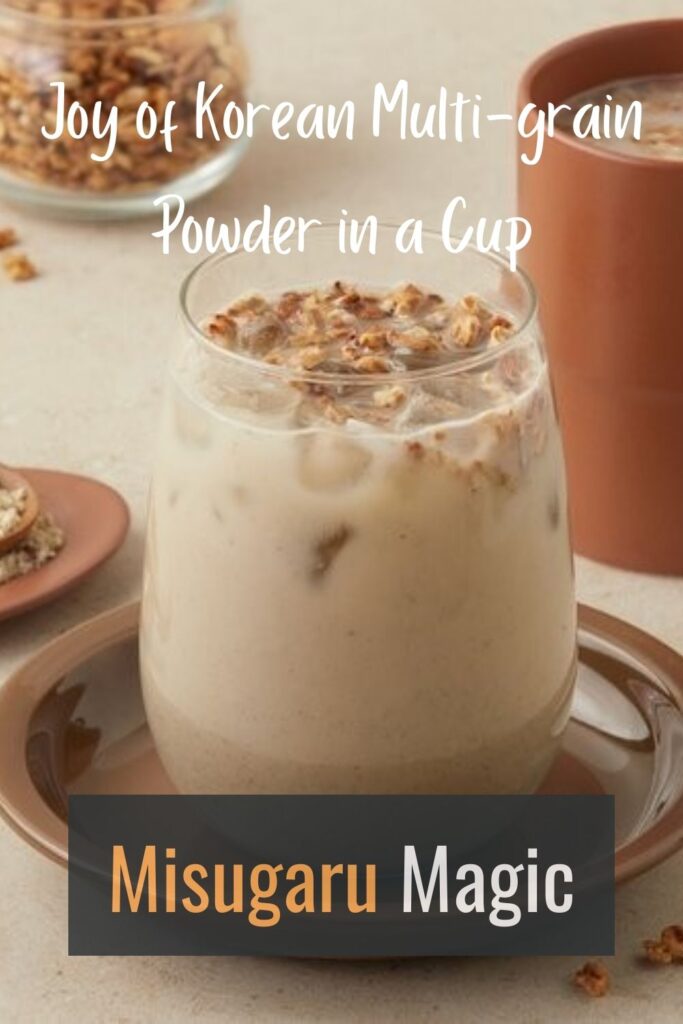
Quick Summary
- Misugaru refers to Korean multi-grain powder.
- Misugaru tastes toasty, nutty, and slightly sweet.
- Misugaru can be a nutrient-dense option and a meal replacement.
What Is Misugaru?
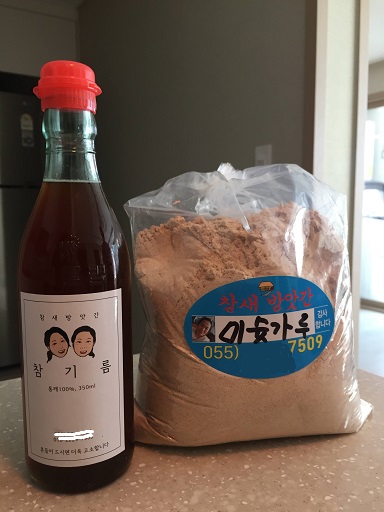
Misugaru, often referred to as “Korean multi-grain powder,” is a delightful concoction made from a variety of roasted grains.
The exact composition may vary, but it typically includes grains like barley, brown rice, black and white sesame seeds, black beans, and sometimes millet or soybeans.
The result? A finely ground powder bursting with nutty, toasty goodness and nutrition.
What Does Misugaru Taste Like?
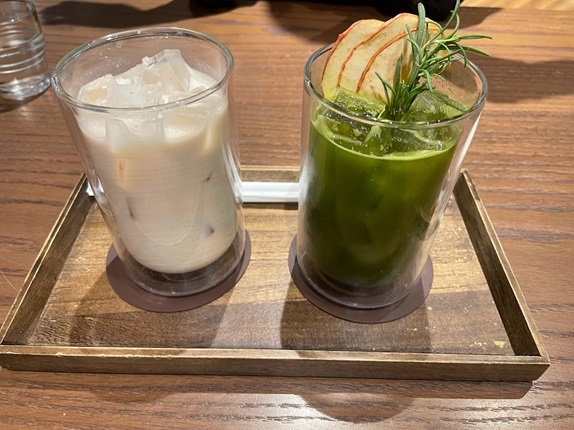
Now, the million-dollar question – what does Misugaru taste like?
Imagine a harmonious symphony of toasty, nutty, and slightly sweet notes dancing on your taste buds.
The combination of roasted grains creates a unique flavor profile that is both comforting and invigorating.
It’s a taste that lingers, leaving you with a satisfied feeling.
Is Misugaru a Meal Replacement?
Misugaru can be a nutrient-dense option and, it is used as a meal replacement.
The combination of roasted grains, beans, and seeds provides a good mix of macronutrients, including carbohydrates, proteins, and healthy fats.
It also contains various vitamins and minerals, depending on the combination.
If you’re considering using Misugaru as a meal replacement, make sure to complement it with a well-rounded diet and ensure you get all the necessary nutrients your body needs.
As Koreans like to say “Too much is as bad as too little“, I’d personally recommend to substitute dinner (or one meal of the day) with Misugaru if you’re dieting.
Is Korean Grain Powder Healthy?
Yes, Korean grain powder, Misugaru, can be a healthy addition to your diet for several reasons:
- Nutrient-Rich: Misugaru is packed with the goodness of various grains, beans, and seeds, providing a diverse array of nutrients, including fiber, protein, vitamins, and minerals.
- Digestive Benefits: The fiber content in Misugaru, especially from grains like barley and brown rice, can contribute to digestive health by supporting regular bowel movements.
- Satiety: The combination of protein and fiber in Misugaru can help promote a feeling of fullness, which may be beneficial for weight management.
- Source of Antioxidants: The roasted nature of the grains and seeds in Misugaru may contribute to antioxidant content, which can help combat oxidative stress in the body.
- Potential Blood Sugar Regulation: Some components of Misugaru, such as barley and black beans, have been associated with potential benefits in the way of blood sugar control.
As with any dietary consideration, consult with a healthcare professional or a nutritionist to ensure that Misugaru fits well into your individual dietary requirements and health goals.
What Are Some Misugaru Recipes?
The easiest Misugaru recipe is mixing it with milk and honey.
- Fill a shaker bottle with milk (about 7 oz).
- Add 3 tablespoons of misugaru and 1 teaspoon of honey (or 1 tablespoon, depending on how much of a sweet tooth you have).
- Shake and drink it!
Tips: If you don’t have a shaker bottle, you can whisk it all in a bowl!
You can also sprinkle this magic powder into your culinary creations. Here are some ideas:
- Misugaru Smoothie: Blend Misugaru with your favorite fruits, yogurt, and a splash of milk for a wholesome and energizing smoothie.
- Misugaru Pancakes: Infuse your pancake batter with Misugaru for a nutty twist. Top with fresh fruits and a drizzle of honey for the perfect breakfast treat.
- Misugaru Ice Cream: Mix Misugaru into your homemade ice cream base for an innovative frozen dessert with a delightful crunch.
- Misugaru Bingsoo: Make your own bingsoo or a milk-based Korean shaved ice dessert, and sprinkle misugaru on top!
Where Can I Buy Misugaru in the USA?
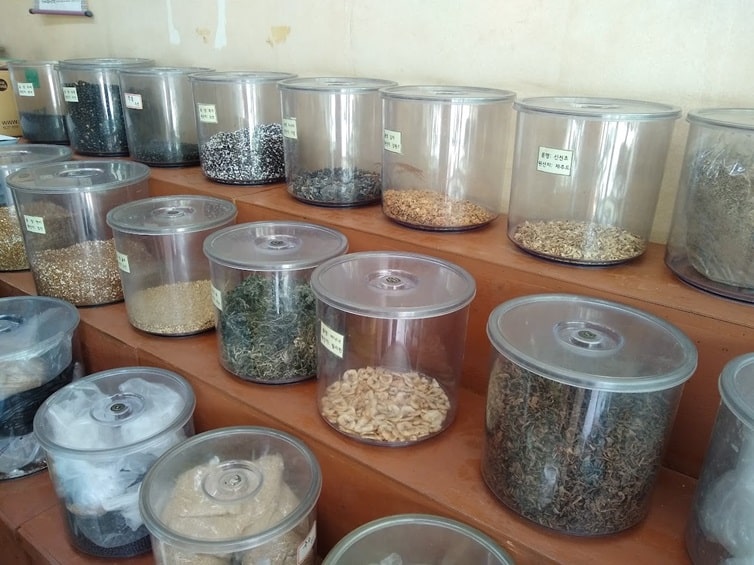
Finding Misugaru in the States can be a fun quest, and luckily, there are several areas where you can explore and purchase it.
Your first stop could be Korean markets or grocery stores in the nearest Koreatown. They carry commercial Misugaru, or rarely fresh ones if you’re super lucky.
For experienced adventurers, check out Korean rice cake bakeries or mills hidden in the K-town. They’re more likely to sell fresh Misugaru they just roasted and ground. They often offer customization according to your dietary condition.
Does Misugaru Have Caffeine?
No, traditional Misugaru is caffeine-free. Whether that’s a good or bad thing is up to you!
The primary ingredients—roasted grains like barley, brown rice, sesame seeds, and beans—don’t naturally contain caffeine.
So, if you’re looking for a comforting beverage without the jolt of caffeine, misugaru is an excellent choice.
However, since some commercial misugaru blends or variations may include additional ingredients, check the product label for any added components.
How Long Is Misugaru Good For?
The shelf life of misugaru largely depends on how it’s stored.
Since misugaru is made from roasted grains, it’s susceptible to the natural oils in the grains turning rancid over time.
Here are some general tips:
- Store in an Airtight Container: After making or purchasing misugaru, transfer it to an airtight container. This helps prevent exposure to air and moisture, which can compromise quality.
- Keep Away from Heat and Light: Store misugaru in a cool, dark place, away from direct sunlight and heat sources. This helps maintain the freshness and flavor of the roasted grains.
- Check for Rancidity: Over time, the oils in the grains may turn rancid, affecting the taste of misugaru. If you notice an “off” smell or a change in flavor, it’s a sign that the mixture might have passed its prime.
- Commercial Products: If you’ve purchased commercially produced misugaru, check the expiration date mentioned on the packaging. Follow the recommended storage instructions to ensure the product stays fresh until the indicated date.
As a general rule of thumb, try to use misugaru within six months to a year for optimal flavor.

